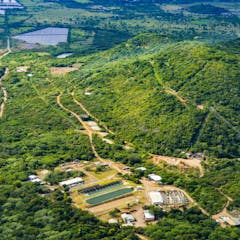
Articles on Mining
Displaying 41 - 60 of 518 articles

The WA radioactive capsule was discovered within two weeks. But in 1980, when a mine worker was discovered to have stolen 2,200 kilograms of uranium oxide, it had been missing for 3 years.

Should the capsule not be found immediately, we can’t just write it off as lost. A long term system of monitoring is needed to protect humans and the environment.

Proponents of mining in space often point to the potential benefits for Earth and its people. But this research casts doubt on many of them.

The lost radioactive source may never be found.

Mining nodules from the deep ocean seabed could provide the metals crucial for today’s EV batteries and renewable energy technology, but little is known about the harm it could cause.

Destructive mining in Congo’s protected areas is rampant because it generates money for citizens, officials and armed groups.

Energy transition minerals are essential to tackling climate change. But First Nations people must have a genuine say in where and how this happens.

Tellurium is a critical mineral for renewable energy – but little is known about its environmental effects and how it circulates in the wild.

Locals from Asunción Mita, Guatemala recently voted against the development of mining activities in their municipality, in a referendum contested by a Canadian mining company that owns a gold mine.

Our prospects of a better, fairer future are inextricably linked with the minerals and metals beneath our feet. Is it time to make peace with the industry that extracts them?

Confusion over which government department should regulate the tailings dams may explain the Jagersfontein tragedy.

If mining workplaces are anything to go by, the clean energy sector will have their work cut out for them to retain women in the workforce.

Fossil fuel subsidies from major economies nearly doubled in 2021, reaching almost US$700 billion. Here’s how Australia stacks up.

Community plays have become a way for the stories and experiences of slavery survivors to be told and understood in Jamestown, Accra.

Canada is connected to the Democratic Republic of Congo through the global economy, international peacekeeping efforts and migration. We must not ignore violence because it’s far away.

In the Copperbelt the category of ‘expatriate’ recreated a dual wage structure that still persists.

Artisanal gold mining is highly organised and rule-bound. Men, women and even children participate a hierarchy sustained by a web of buyers, sponsors and customers.

For centuries, Pacific Islands have been raided by mining interests with little to show for it. Harnessing their enormous green mineral wealth must be done justly.

Militias mete out violence far from the centres of power – but their dirty work is politically useful.

While many people rely on written signage to find their way around, oral language plays a significant role in giving directions in rural areas.
